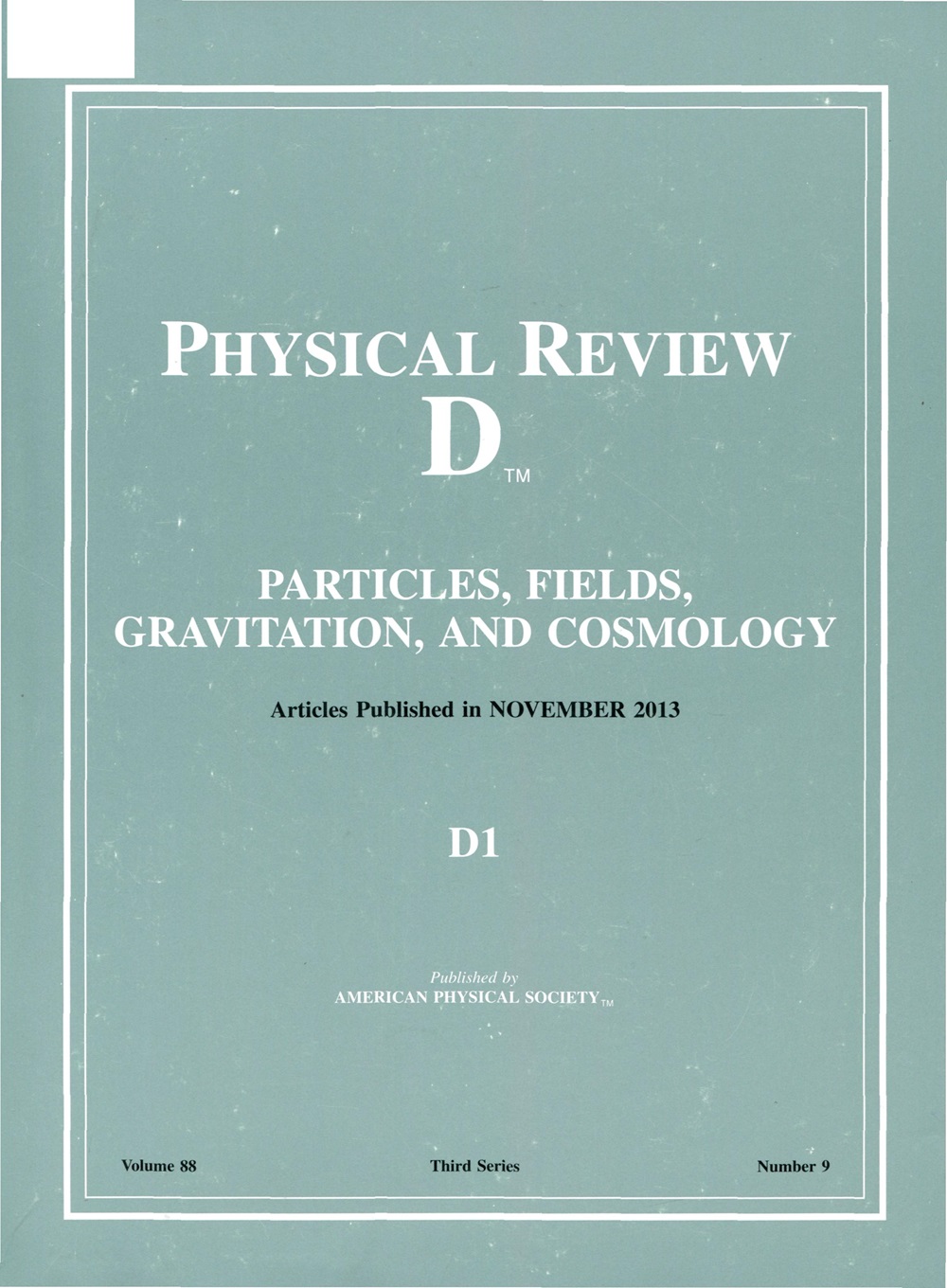广角介子- Δ(1232)光电生产
IF 5
2区 物理与天体物理
Q1 Physics and Astronomy
引用次数: 0
摘要
高能广角光生产πΔ最终状态进行了研究,以扭转-3精度的手提袋机制。在这种方法中,过程振幅分解为一个硬部分子过程和形式因子,表示p−Δ跃迁广义部分分布(gpd)在零偏度下的1/x矩。子过程,计算到扭转-3精度,是相同的介子光生产。p−Δ gpd与利用大nc结果的质子-质子gpd有关。子过程中出现的质子-质子gpd以及扭转-2和扭转-3介子分布振幅取自其他工作。该分析结果与实验结果基本一致。2025年由美国物理学会出版本文章由计算机程序翻译,如有差异,请以英文原文为准。
Wide-angle pion- Δ(1232) photoproduction
High-energy wide-angle photoproduction of πΔ final states is investigated within the handbag mechanism to twist-3 accuracy. In this approach the process amplitudes factorize in a hard partonic subprocess and in form factors which represent 1 / x p − Δ p − Δ N C Published by the American Physical Society 2025
求助全文
通过发布文献求助,成功后即可免费获取论文全文。
去求助
来源期刊

Physical Review D
物理-天文与天体物理
CiteScore
9.20
自引率
36.00%
发文量
0
审稿时长
2 months
期刊介绍:
Physical Review D (PRD) is a leading journal in elementary particle physics, field theory, gravitation, and cosmology and is one of the top-cited journals in high-energy physics.
PRD covers experimental and theoretical results in all aspects of particle physics, field theory, gravitation and cosmology, including:
Particle physics experiments,
Electroweak interactions,
Strong interactions,
Lattice field theories, lattice QCD,
Beyond the standard model physics,
Phenomenological aspects of field theory, general methods,
Gravity, cosmology, cosmic rays,
Astrophysics and astroparticle physics,
General relativity,
Formal aspects of field theory, field theory in curved space,
String theory, quantum gravity, gauge/gravity duality.
 求助内容:
求助内容: 应助结果提醒方式:
应助结果提醒方式:


